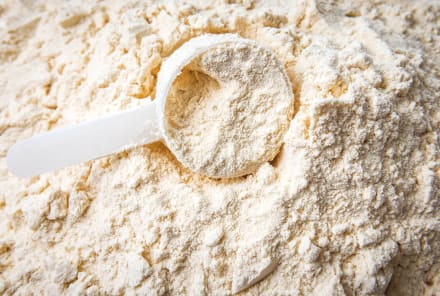Advertisement
A Clinical Microbiologist Explains How To Get Your Probiotic To Actually Work


With so many commercial probiotics strains on the market, how are we to know which ones work best? This is a common question that's not easy to answer because each person (when it comes to their gut health) has a different goal in mind.
One person may take a probiotic to offset the effects of antibiotic use, one may be looking for a natural way to lower cholesterol levels, and another may want to improve overall digestion and immunity. Some experts will tell you to consult the scientific literature to identify probiotic strains that have demonstrated efficacy in clinical trial studies. However, before the literature is consulted, let's take a step back and ask a more fundamental and important question: How do probiotics work, and do they work the same for everyone?
One size does not fit all when it comes to probiotics.
While science is not able to answer this question with 100 percent certainty, we know so much more than we did a few years ago, and you don't have to be a science geek to understand the basics. So, if you want to know which probiotics work best and what actions you can take to optimize the performance of your probiotic—read on. Because the best probiotic in the world for you might not work so well for your neighbor.
Probiotics are live microorganisms that, when consumed in adequate amounts, provide health benefits to our bodies. However, unlike vitamins and other nutritional supplements that are assimilated into our bloodstream to serve our metabolic needs. Probiotics do not enter our circulatory system and therefore must work their magic from behind the scenes, confined to the hostile environment of our intestines.
Meet your gut microbiota.
Scientists estimate that our intestines are home to a population of micro-organisms that number between 30 to 50 trillion, and some claim that they have counted up to 100 trillion—but when you get to a certain point, who's counting, right? We sometimes complain about congestion in our big cities, but how would you like to live in a population of 50,000,000,000,000?
In other words, when our personal gut microbiota is compared to someone else's microbiota, there's an incredible amount of variability, and some scientists believe that this may help explain why people assimilate nutrients differently.
Have you ever wondered why one person can gobble up a seven-course meal without gaining weight while the next person packs on the pounds? One of the keys to this variance may reside within our microbiota. This same person-to-person variability observed in the gut microbiota may also help to explain why people respond differently to probiotics.
Probiotics have to survive your hostile gut environment in order to do their job.
We also need to consider that the probiotics we consume have to travel most of the way through our digestive system and then come shoulder to shoulder with 50 trillion other micro-organisms that are vying for the same space and nutrients.
Clinical studies have demonstrated the benefits of probiotic supplementation, but due to the high interpersonal variability of our gut microbiota, it's unlikely that a single strain would be beneficial to all people.
If your favorite strain of probiotic is pushed around and unable to compete for nutrients and establish residency within your personal microbiota, then it will be quickly shown the exit by way of your next bowel movement. However, since most commercial probiotics are selected from the bowels of healthy human donors, they are conditioned to the hostilities of the gut environment and have the resources to neutralize threats and elbow their way in to go to work for us—at least temporarily.
We also know that probiotics are transients and do not permanently colonize the intestines. But as long as the strain is present for long enough to have a positive impact on our health, then it's doing its job. In fact, studies1 have shown that despite their transient nature in our gut, probiotics are able to modulate the activity levels of our genes and that this delivers a health benefit by controlling the breakdown of complex carbohydrates and sugars.
Here's how to get your probiotic to work for YOU.
Every time a probiotic is consumed, it enters a gut microbiota environment that is unique and personalized to the individual. In order to ensure that your personal microbiota is prepared to receive your probiotics with a warm welcome, consider the following advice:
1. Take your probiotics with food.
This reduces the acidity of your stomach and makes it more likely that the live micro-organisms will pass through unharmed.
2. Provide your probiotic with nourishment.
You can do this by eating plenty of the prebiotic fiber found in fruits and vegetables. Prebiotic supplements are also available, and it's not a bad idea to take one of these with the probiotic.
Watch Next
Enjoy some of our favorite clips from classes
Enjoy some of our favorite clips from classes
What Is Meditation?
Mindfulness/Spirituality | Light Watkins
Box Breathing
Mindfulness/Spirituality | Gwen Dittmar
What Breathwork Can Address
Mindfulness/Spirituality | Gwen Dittmar
The 8 Limbs of Yoga - What is Asana?
Yoga | Caley Alyssa
Two Standing Postures to Open Up Tight Hips
Yoga | Caley Alyssa
How Plants Can Optimize Athletic Performance
Nutrition | Rich Roll
What to Eat Before a Workout
Nutrition | Rich Roll
How Ayurveda Helps Us Navigate Modern Life
Nutrition | Sahara Rose
Messages About Love & Relationships
Love & Relationships | Esther Perel
Love Languages
Love & Relationships | Esther Perel

















